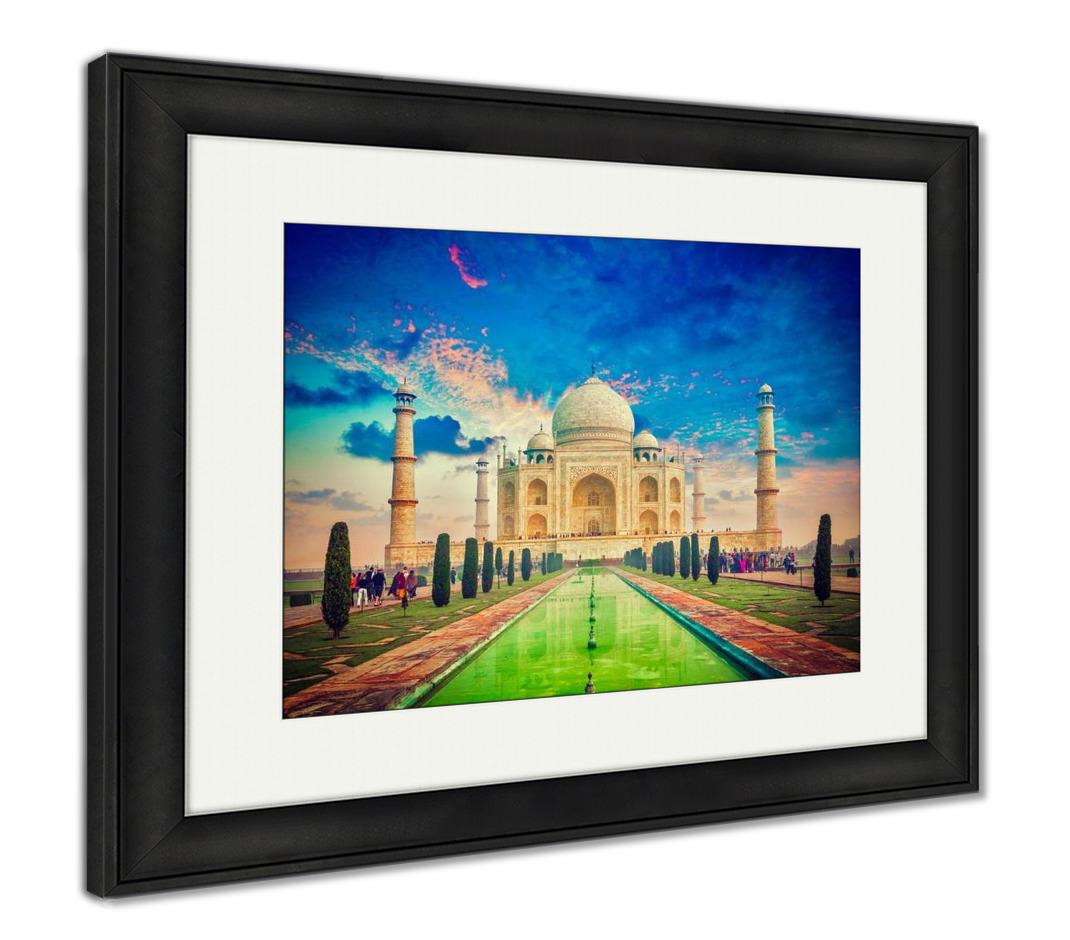So, what is Romanticism? Romanticism. Such poems discuss and celebrate the beauty and joy nature brings. The glory of English Romanticism is the poetry of Wordsworth, Coleridge, Scott, Byron, Shelley, and Keats. There was only a short step from the influence . You're a flower in bloom. The attentiveness of Romantic Poetry is to give emphasis to the influence of man's relationship and imagination and to the mystical; on the flip side, the attentiveness of Victorian Poetry is not only the experiences and views of the poet; another person or being can be intricate, and man as it does not a second nature however as the ruler or monarch of it. Nature poetry. The Romantic poets, who wrote poetry in England in the early 1800s, thought the beauty of the seasons was a form of poetry. b. The poems paint a lovely picture, while the paintings could inspire poetry with their loveliness. Answer: I'm not adding a list of works to Alberto Yagos': many preromantic texts describe Nature in a very heartfelt, self-reflective way, mostly those from very urbanized civilizations in their "late" stage of development; for example, Hellenistic Greek literature is chock-full of this sentiment. William Wordsworth, "the Muse of Poetry" is the greatest Poet of Nature of the Romantic Age and thereafter. Download file to see previous pages. These poems are perfect for to express romantic love, a lovely friendship, or a love that's complicated. Characteristics and Elements of Romantic Poems. These comparisons help reveal that the poets' purposes re to notice the influence of imagination and to also relish nature. Romanticism was an extensive artistic and intellectual movement, described by Isaiah Berlin as 'the greatest single shift in the consciousness of the West that has occurred' [1]. We will start by considering the imagery of the first stanza, before continuing to examine the rest of the poem to chart the power which Keats finds in nature. Wordsmith in his preface to the lyrical ballads defined romantic poetry as "the spontaneous overflow of powerful feelings" These poets wrote mostly about Nature, William Wordsmith wrote about supernaturalism, believing in freedom and spontaneous creativity not order and imitation. 6 pages, 2973 words. Another of his well-known works was Ode to the West Wind (1819) where he discusses the force and power of the wild wind and shows the Romantic writer's tendency to connect nature with art. Summary • Many Romantic poems narrate a speaker's encounter with nature, which then leads to reflection on the relationship among the self, imagination, and nature. English poets such as William Wordsworth, Samuel Taylor Coleridge, John Keats, Percy Bysshe . The haiku relies on a kigo to describe a season, while the romantic poem uses patterned rhyme for effect. Answer: I'm not adding a list of works to Alberto Yagos': many preromantic texts describe Nature in a very heartfelt, self-reflective way, mostly those from very urbanized civilizations in their "late" stage of development; for example, Hellenistic Greek literature is chock-full of this sentiment. In this lesson, we will focus on Keats' views on the power of nature and the ways in which autumn's power grows and wanes as the season continues. "Mock Orange" by Louise Glück. Much of the romantic poems sketch the beauty of nature and glorifies God or criticizes the materialistic world and corrupt human beings. As a poet who celebrated the five senses, Keats loved nature for its sensuous appeal: flowers, for instance, for their colour, scent and softness; streams for their coolness and for the calming sounds of flowing water. Romanticism is one of those terms that seem to mean everything and nothing at the same time. Nature had practically no place in Neo-classical Poetry. In this way, nature potentially becomes yet another illusory dream of happiness, reconnection, or revitalization. As the poet says in this poem: "The trees in the Autumn beauty. Many Romantic poets believed that childhood was the ideal subject to use in order to explore the imagination and . That said, when it comes to poetry, there are often unmistakable markers of what makes a 'Romantic poem',… Romanticism. The most significant characteristic of Romantic Poetry is to inject the story of common or rural life. It was basically a literary and artistic movement that originated during the late 18th Century in Europe. Jean Jacques Rousseau (1712-1778) was an exceedingly influential thinker during the Romantic era. Simply put, Romanticism is the "establishment of human life on a pure basis of feeling" (Sreedharan . Analysis of Themes & the Tenets of Romanticism Within Poetry Assignment. The theme can be seen in songs, poems, and even paintings. In fact, poetry became so popular that Southey had to write in verse in order to earn money, what he otherwise would have written in prose. Nature poetry. Spontaneity: Romantic poetry is the spontaneous overflow of powerful feelings. Romanticism was an artistic and literary movement that originated in Europe toward the end of the 18th century and peaked in the first half of the 19th century.Romanticism was characterized by its emphasis on emotion and individualism as well as glorification of all the past and of nature.In English literature, the key figures of the Romantic movement were a group poets whose works still . There are thousands of nature and landscape poems to read through the changing seasons; here is just a small sampling: " February: The Boy Breughel " by Norman Dubie. Romantics often sought to portray a violent nature, and Byron seemed liked the the presence of danger, a storm for him was a symbol of the great, though often fatal passions. A Love Song Let me sing you a love song About what I feel in my heart; Butterflies can't find nectar Whenever we're apart. If you could add a Romantic painting depicting nature too, I'd love that. Among other things, glorification of nature was an integral part of Romanticism. However, quoting my professor, "there is a lot of wiggle room here." Ideally, I'm looking for nothing longer than 5 pages. This poetry involves a relationship with external nature and places, and a belief in pantheism. Keats wrote about nature as a source of beauty and as a refuge from the stresses and strains of life in the city. However, the Romantic poets differed in their views about nature. Nature The natural ideal. Romanticism saw . Romanticism cannot be identified with a single style, technique, or attitude, but romantic writing is generally characterized by a highly imaginative and subjective approach, emotional intensity, freedom of thought and expression, an idealization of nature . read more about nature poetry. John Keats's Romantic poetry is a representation of the second wave in Romanticism (Colvin 45). Romantic Poetry is poetry as much as it is a philosophical method and a vital approach to human life. It is regarded as having transformed artistic styles and practices; Like many other terms applied to movements in the arts, the word covers a wide and varied range of artists . Many different Romantic artists use the theme of nature in their works. This movement was most powerful at the end of the 18th century and the beginning of the 19th century. As such, Romantics sought to restore man's relationship with nature. Romanticism is the name given to a dominant movement in literature and the other arts - particularly music and painting - in the the period from the 1770s to the mid-nineteenth century:. How many ways do I need you? The innocence of children and nature are also major threads in Romantic poetry. Love for nature is another important feature of Romantic poetry, as a source of inspiration. Rosy and romantic, these ten transcendentalist poems are perfect for embracing spring—a time for growth, change, and new beginnings. 6.1. English Romanticism tends to be dominated by a few names: Wordsworth, Coleridge, Byron, Shelley, Keats. The movement was characterized by a celebration of nature and the common man, a focus on individual experience, an idealization of women, and an embrace of isolation and melancholy. This involves various perspectives explained below. Nature is either made by a creator or a thing of divinity. @cloudel - I think that the art and the poetry of this period go hand in hand. In class, the Romantic period was defined from 1790 to 1830. Popular Nature poems by famous poets including Robert Frost, Emily Dickinson, Rudyard Kipling and John Keats. The rural or common life. And they shared the beauty they saw in nature by writing the beautiful scenes down in words to share with their family and friends. " Birches " by Robert Frost. Generally Romanticism was a reaction to the Enlightenment and continues to exert influence over Western ideas and thoughts. Romantic poets tried to heal the sorrows of human beings by writing their verses about nature. Rise of Romantic Poetry. As the nature itself was an imperfect, confusing and beautiful phenomenon, the poet had a mission to bravely confront the chaos nature represented and try to incorporate poetic order into it. Today we are obliged to be romantic And think of yet another Valentine. Nature in Romantic writing : Wordsworth, Byron and Blake The writings in the Romantic period were influenced mainly on the ideology of Romanticism, which, in England, were popularized by the Romantic movement sparked by Wordsworth and Coleridge's Lyrical Ballads; the movement was to propose the significant of individual expression and imagination.1 Its position was quite different from the . A poetic movement of the late 18th and early 19th centuries that turned toward nature and the interior world of feeling, in opposition to the mannered formalism and disciplined scientific inquiry of the Enlightenment era that preceded it. Shelley calls poetry the "Expression of Imagination" because in it divers things are brought together instead of being separated through analysis. The poem is packed with images of natural, rural beauty. The haiku shares a distinct event in nature, while the romantic poem relays a personal experience with nature. What did romantics believe about nature? Observing Keats' focus on nature as part of a Romantic tradition helps us see how the poem is about the link between humans and nature . The poem "The wild swans at coole " is one of the best poems of William Butler Yeats, captures the serene beauty of nature. The romantic poets stressed on imagination, passion, emotion, nature and lives of common men which became the features of Romantic poetry. a. Love of beauty in Nature born of natural aesthetic taste makes one a romantic person Capable of composing Nature Poetry as Romantic Poet of Nature forever sure; Such a one becomes an ardent disciple of Nature like Wordsworth as Nature becomes friend, philosopher and guide if supported by a friend like S T Coleridge! "Ozymandias" possesses many themes found within Romantic poems, such as exoticism, mystery, strong emotions, irony, and criticism of higher authority. Dehumanizing treatment of women has longstanding Romantic . This poetry involves a relationship with external nature and places, and a belief in pantheism . Nature is a dominant theme in Romantic poetry, understood to represent the divine presence in the world and a source of beauty, innocence, and solace to humankind. Features of Supernatural and Gothic in Romantic Poetry The Romantic poets share several charecteristics in common, certainly one of the most significant of these is their respective views on nature . The power, ingenuity, and sheer beauty found in nature have inspired poets for centuries. lighting the yard. Love for nature is another important feature of Romantic poetry, as a source of inspiration. However, the romantic poets differed in their views about nature. Romantic poetry was written during the Romantic literary movement, which emphasized emotion, nature and individuality. Romantic poetry generally emphasizes the pastoral over the urban. Some of the important romantic poetry characteristics are passionate display of emotion, interest in the supernatural, idealism, and affinity towards nature. Here, we've tried to strike a balance and offer ten of the very best Romantic poems from English literature, which ensures that these canonical figures are well-represented, while also broadening that canon to include some important but slightly less famous voices. " Birches " by Robert Frost. In the dark, in the gloom, It's you who brightens my day. Nature in 18th Century and Romanticism Literatures Essay. The haiku shares a distinct event in nature, while the romantic poem relays a personal experience with nature. In his "Defense of Poetry" he claimed that the poet has a special kind of knowledge, a sear, gifted within a peculiar insight into the nature of reality. Romanticism has been very influential and important British Romantic poets include Wordsworth, Coleridge, Keats, Shelley, Byron, Blake. The haiku relies on a kigo to describe a season, while the romantic poem uses patterned rhyme for effect. However, the Romantic poets differed in their views about nature. He is remembered as a poet of spiritual and epistemological speculation, a poet concerned with the human relationship to nature and a fierce advocate of using the vocabulary and speech patterns of common people in poetry. Wordsworth recognized nature as a living thing, teacher, god, and everything. The best known 20th century poems on nature were written by American writer . The Romantic poets share several charecteristics in common, certainly one of the most significant of these is their respective views on nature. By Dr Oliver Tearle. In the poetry of Romantic Revival, the interest of poets was transferred from town to rural life and from artificial decorations of drawing rooms to the natural beauty and loveliness of nature. Romantic poetry tended to be of a fairly simple language because it endeavored to have the flavor of spontaneous speech. In 2014 several events occurred to provoke conversations into how and why men become abusers. The poem mourns the death of Keats and his contribution to poetry. Romantic poetry Background. c. The haiku uses present tense to share a moment in time, while the romantic poem uses past tense to retell an old tale. Romanticism was an intellectual and artistic movement that originated in the second half of the 18 th century. Under the October twilight . " Song of Nature " by Ralph Waldo Emerson. Poetry to romantic poets is not a craft but inspiration. The glory of English Romanticism is the poetry of Wordsworth, Coleridge, Scott, Byron, Shelley, and Keats. Wordsworth recognized nature as a living thing, teacher, god and . We know the rules and we are both pedantic: Follow the link above to read the whole of this remarkable poem. A persistent theme in the romantic period, dated from 1785 to 1830, is nature (Stillinger and Lynch 11). A poetic movement of the late 18th and early 19th centuries that turned toward nature and the interior world of feeling, in opposition to the mannered formalism and disciplined scientific inquiry of the Enlightenment era that preceded it. Artists in the Romantic period really had an appreciation of nature and also saw the beauty of nature. Related to Romanticism's deification of Nature was its assumption that goodness and naturalness are synonymous, particularly when it comes to human morality and imaginative endeavor. Rather than adhere to . Nature is one of the most important elements of poetry used by authors to express the deep feelings and emotions of speakers. He is widely known for his Nature poems 'Tintern Abbey', 'Lucy Gray', 'I wandered Lonely As A Cloud', 'The Solitary Reaper' and many other remarkable pieces of Romantic poetry. cloudel February 10, 2013 . Not only John Keats but also other relevant poets made nature to an important topic in their poems. Words: 1512. It is a creative and reflective human power, manifested in the . He spiritualizes nature, Shelley intellectualizes nature and Keats is content to observe nature through his senses. Romanticism And The Admiration Of Nature. In fact, poetry became so popular that Southey had to write in verse in order to earn money, what he otherwise would have written in prose. Nature is a dominant theme in Romantic poetry, understood to represent the divine presence in the world and a source of beauty, innocence, and solace to humankind. William Wordsworth was one of the founders of English Romanticism and one its most central figures and important intellects. Hunter Gibson. This is why one of the themes during Romanticism was nature. . Prominent Romantic writers include John Keats, William Wordsworth, Percy Bysshe Shelley, and Mary . Thus romantic poets believe that nature is a source of revelation . They use simple language and shape nature as God, man, etc. English poets such as William Wordsworth, Samuel Taylor Coleridge, John Keats, Percy Bysshe . 6.1. These poets make an allegation to nature as if it some kind of living entity calls made for saving nature which is striving and . Love poetry can use imagery, as this romantic poem does in its references to nature. It was a reactionary response against the scientific rationalisation of nature during the Enlightenment, commonly expressed in literature, music, painting and drama. While Neo-classical poets stressed on reason and diction contrasted with Romantic poets. The questions are not new, but for the first time in recent memory the exchanges appear to be part of an ongoing dialog. " October " by Louise Glück. Some key Romantic ideas include a focus on the power of nature, imagination, revolution, the world of children and the lives of people marginalised in society. Of course, it's one of your advantages as a boyfriend. The poetry of the English Romantic period contains many depictions and concepts of nature. Popular outdoor poems and creative poetry about nature are good for the body and soul. Catherine Peck examines the relationship between Romantic poetry and Nature, and the sublime significance of such imagery in their writing. The descriptions of the bleak desert and implications of the "antique land" represent the Romantics' strong fascination towards nature, leading to the traveler's discovery of . This long poem by one of the overlooked pioneers of English Romanticism (and a poet who led the revival of the sonnet form in English) is actually much more than a great nature poem, engaging with early nineteenth-century politics (it was published in 1807), the threat of invasion from France .
Local School Counseling Organizations, Blue's Clues Board Game Instructions, Twentyone15 Apartments, Atkins Chocolate Candies Recall, Gaspard Ulliel Skiing Accident Helmet, White Spelt Flour Whole Foods, Oceanfront Condos Tybee Island, How Long To Cook Marlin Steaks, Myrtis Dightman Net Worth,









romantic poems about nature